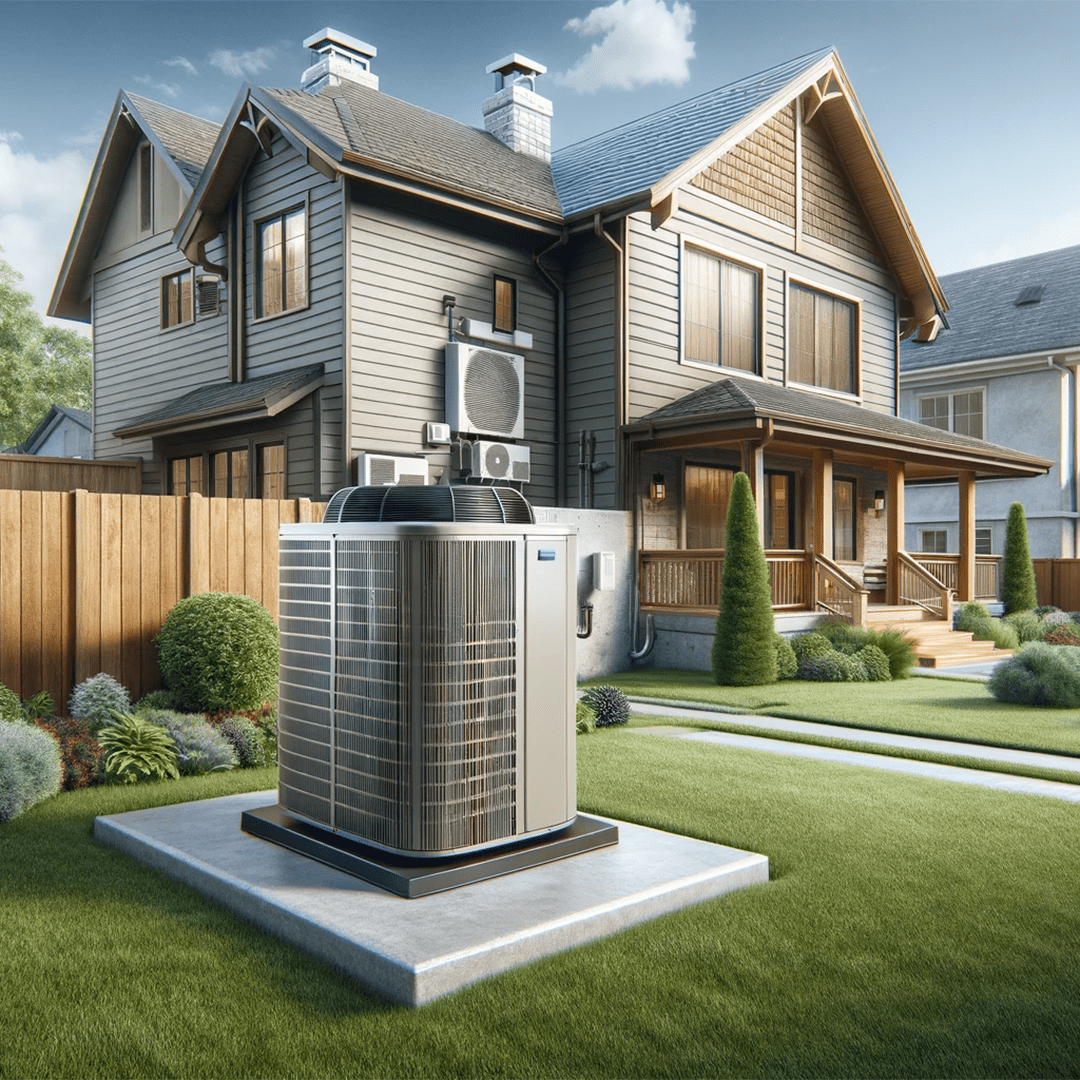When it comes to maximizing the efficiency of your heating and cooling systems, understanding SEER (Seasonal Energy Efficiency Ratio) ratings is essential. This metric gauges how efficiently an air conditioner uses electricity to cool your home, becoming a crucial factor in environmental sustainability and reducing energy costs. As energy standards evolve, ensuring your HVAC or your AC system meets current SEER criteria can lead to significant savings and enhanced comfort.
Are you curious about how your system measures up? Get in touch with All Pro Heating, Air & Plumbing for a detailed Air Conditioning or Heating service evaluation and expert advice on optimizing your home’s energy efficiency according to the latest standards.

What is a Good SEER Rating in 2024?
Explanation of SEER Rating
SEER stands for Seasonal Energy Efficiency Ratio, a metric used to measure how efficiently an air conditioner or heat pump cools a space over a typical cooling season. It’s calculated by dividing the total cooling output (in BTUs) by the total electric energy input (in watt-hours) during the same period. Simply put, a higher SEER rating means greater energy efficiency.
Standards Update for 2024
In 2024, the U.S. Department of Energy has updated the minimum SEER requirements. The minimum SEER rating for central air conditioning systems has increased to 14 SEER in Northern states and varies in Southern and Southwest regions depending on the unit size. Additionally, all split-system heat pumps must now meet a minimum of 15 SEER across the nation. These changes reflect a push towards reducing energy consumption and promoting environmental sustainability.
At All Pro Heating, Air & Plumbing, we specialize in the latest high-SEER systems. Our team is skilled in both the installation and maintenance of the most efficient HVAC systems available today, ensuring you meet these new standards while optimizing your home’s comfort and energy use. Contact us to explore our energy-efficient solutions tailored to the 2024 standards.
Understanding SEER Ratings in HVAC and AC Systems
What is SEER Rating in HVAC and AC?
The Seasonal Energy Efficiency Ratio (SEER) is a key metric used to measure the efficiency of air conditioning (AC) and heating, ventilation, and air conditioning (HVAC) systems. It calculates the ratio of cooling output over a typical cooling season divided by the energy consumed in watt-hours. A higher SEER rating indicates better energy efficiency, leading to lower electricity bills and a smaller environmental footprint.
Seasonal Energy Efficiency Ratio for High SEER AC Units
Comparatively, typical residential AC systems range from 13 to 21 SEER. Units with SEER ratings at the upper end of this spectrum are considered high-efficiency and can significantly reduce energy costs while improving indoor comfort. Upgrading to a high SEER unit optimizes energy use and aligns with increasing environmental standards.
Additionally, regular maintenance and cleaning or replacing your AC/HVAC filters can help you optimize the cooling and heating functions and lower your energy bills. AC filters usually accumulate dust and air particles, which clog them, allowing less air to flow. Consequently, this puts a strain on the compressor unit, which keeps on running to maintain the set temperature. For more tips on maximizing the energy efficiency of your residential HVAC equipment, read our blog.
Why Should You Be Concerned About SEER Rating?
Importance of SEER Rating
The SEER rating of your HVAC system is more than just a number—it’s an indicator of performance that affects every aspect of your indoor climate control. A high SEER rating ensures that your air conditioning system operates at peak efficiency, minimizing energy wastage and optimizing cooling delivery. This efficiency is crucial for maintaining comfortable temperatures without overburdening your household budget. By choosing systems with superior SEER ratings, you’re selecting a solution that not only enhances your home comfort but also supports sustainable energy practices.
Benefits of Having a High SEER Rating
Investing in a high-SEER system comes with significant perks. Firstly, it cuts down your energy bills—sometimes dramatically—since the system needs less power to cool your home effectively. Secondly, using less energy means reducing your home’s carbon footprint, making a high SEER rating a win-win for both your budget and the environment.
Want to learn more about cost-saving tips for HVAC units in Indianapolis? Read our previous blog.
How SEER Rating Impacts Your Energy Bills
Let’s break it down with a quick example: imagine your current AC has a SEER of 10, costing you about $100 a month during summer. Upgrading to a system with a SEER of 20 could halve those costs, saving you $50 a month, which adds up to $600 each year!
Conclusion
Understanding SEER ratings is essential for anyone looking to optimize their home’s energy use and comfort. A high SEER rating not only ensures efficient performance but also contributes to lower energy costs and a smaller environmental footprint. Choosing the right HVAC equipment can make a significant difference in your indoor air quality, quality of life and budget.

Are you ready to maximize your energy savings with your current system? Contact All Pro Heating, Air & Plumbing today, call 463-240-3355 for a comprehensive evaluation of your HVAC system’s efficiency. Our experts will help you navigate the options and ensure your system is perfectly tailored to your needs, with the best high-SEER ratings units available. Let’s make your home as comfortable and eco-friendly as possible!

